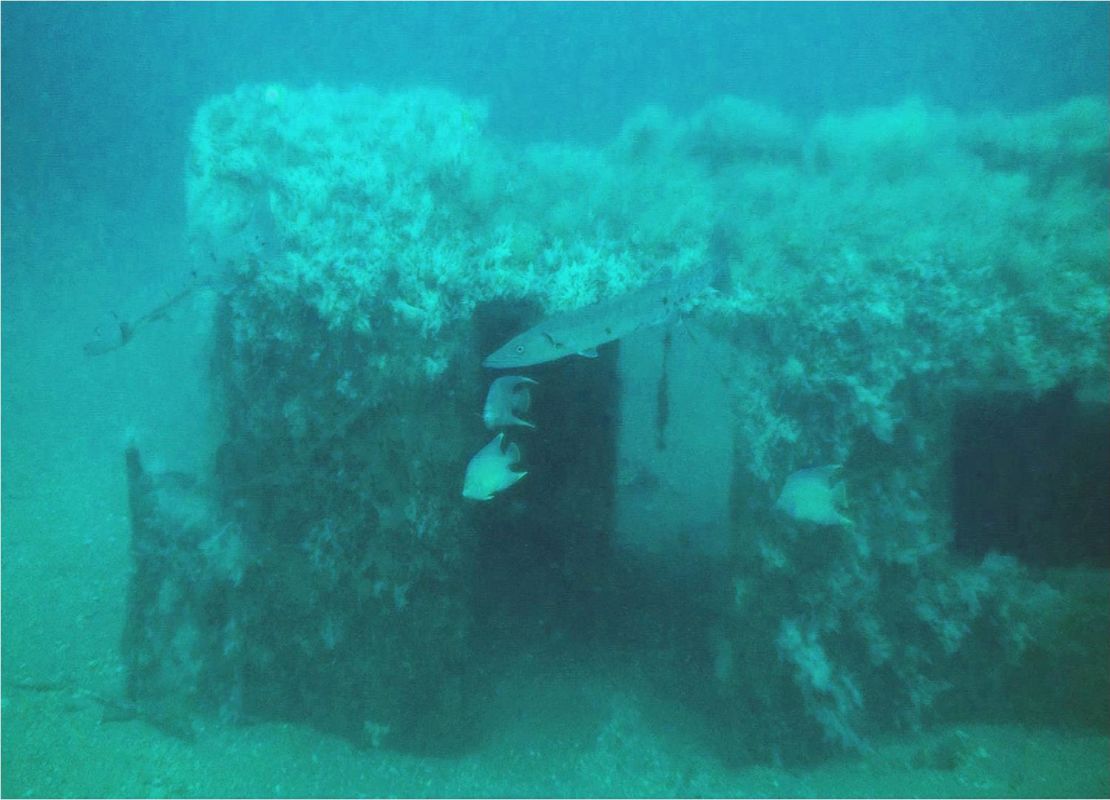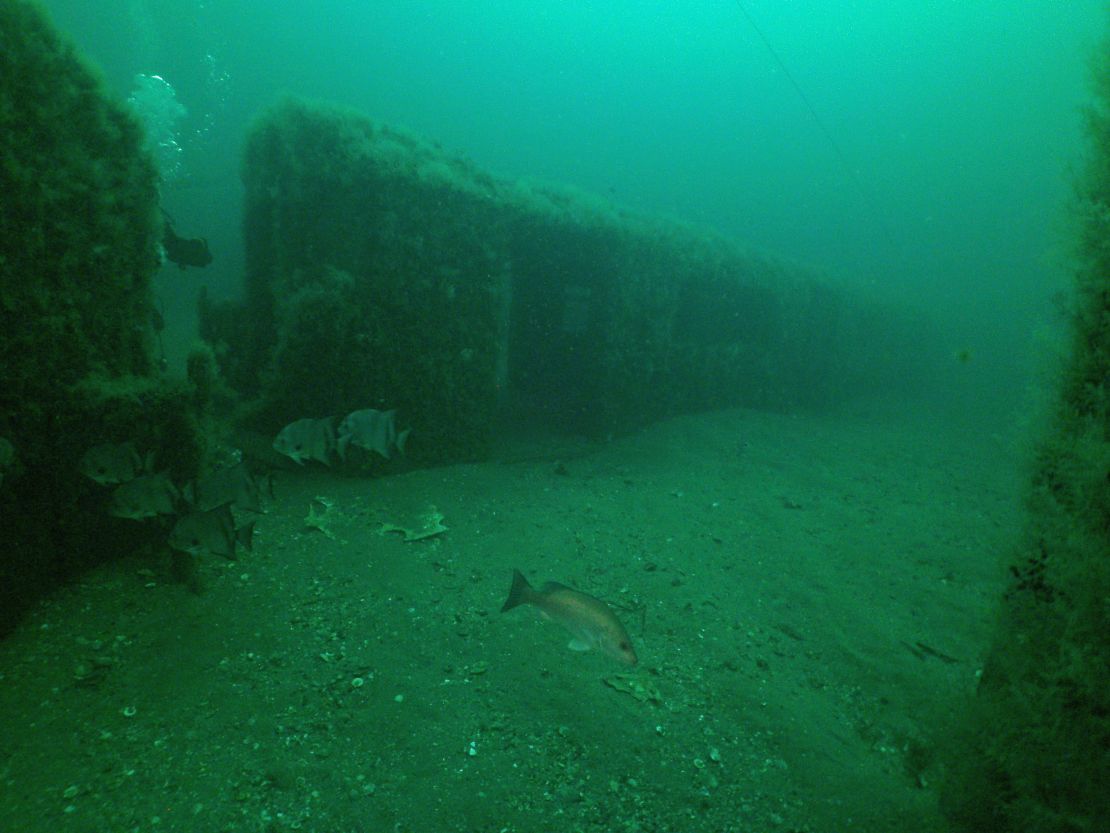Editor’s Note: The Art of Movement is a monthly show that highlights the most significant innovations in science and technology that are helping shape our modern world.
Usually, dumping metal into the ocean is a bad thing, but for once throwing disused items into the sea is working out for the greater good.
Over 2,500 New York subway cars have been used to create an underwater reef for crustaceans and fish in the Atlantic.
Over a period of three years, photographer Stephen Mallon of the Front Room Gallery captured images of the carriages being put in place, and his photos now are being shown in a solo exhibition in New York.
“I had read about the subway cars being dropped into the Atlantic, but I thought the project was over,” said Mallon. “Then in 2007 I was scouting for another shoot and saw the barges being loaded up.”
Once the subway cars had been decommissioned, they were cleaned and every part of them that could be removed – seats, straps and wheels – was recycled or sold. Then the carriages were stacked onto a barge, which transported them to the dropping point.

A hydraulic lift picked them up and dropped them one at a time into the ocean about once a month, destined to become a long line of houses for sea life along the coast from Delaware to South Carolina.
“I had never seen anything like this,” Mallon said. “And I’ve been in New York for over 20 years … there’s a sense of vertigo as they drop – you want to hold on as it falls.” The 42-year-old has an ongoing project entitled American Reclamation that explores the recycling industry in America.
Mallon captured his images from a small boat facing the barge in locations including Delaware, Virginia and South Carolina.
Some cars have also been dropped in Georgia, although not all site locations are disclosed to the public, as some are used for ecological studies.
The project, run by New York’s Metropolitan transit authority, ended in 2010. But the carriages have a new life beneath the sea.
“We’ve been monitoring the carbon steel subway cars and they are holding up well,” said Jeffrey Tinsman, artificial reef program manager at the Delaware Department of Natural Resources and Environmental Control.

“They are still three dimensional, and provide thousands and thousands of square feet of hard surface for invertebrates to live on, some of which, such as blue mussels, could not live on the sand bottom that is naturally there.”
“When you compare the amount of food available on this reef to the natural amount, there is 400 times as much food per square foot as the sand bottom,” Tinsman continued.
“Fish such as black sea bass are not fast swimmers, so need structure to provide both food and shelter; they wouldn’t, for example, be able to outswim a shark, but they could duck into the shelter instead.”
Stephen Mallon’s works are featured in the solo exhibition Patterns of Interest at NYU’s Kimmel Galleries from February 6 to March 15.
READ: Freediving couple’s stunning underwater photo shoot
READ: Neil Armstrong’s widow finds artifacts from moonwalk in a closet






